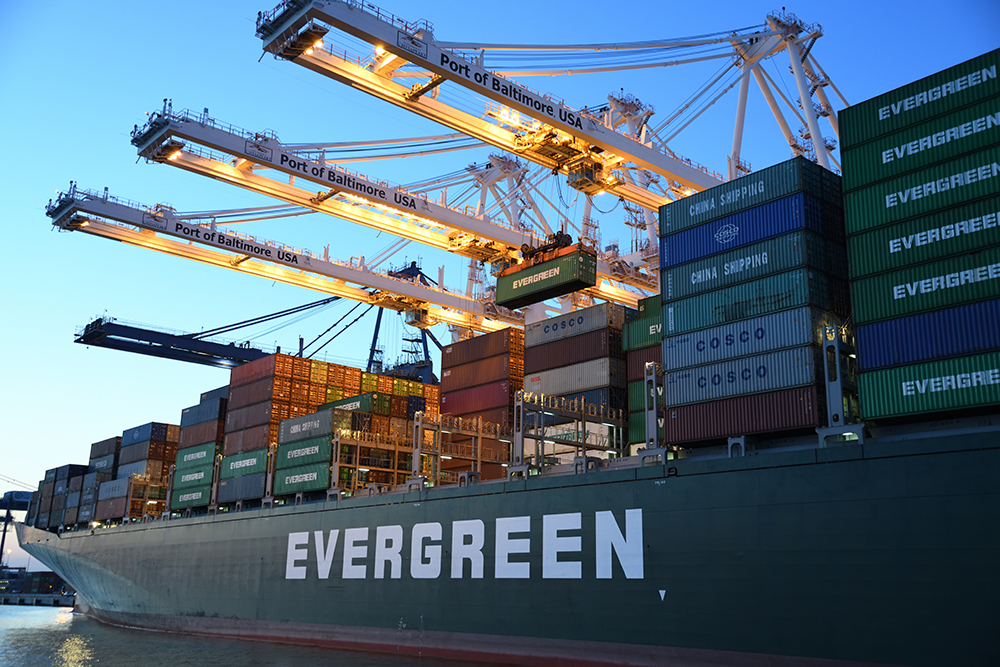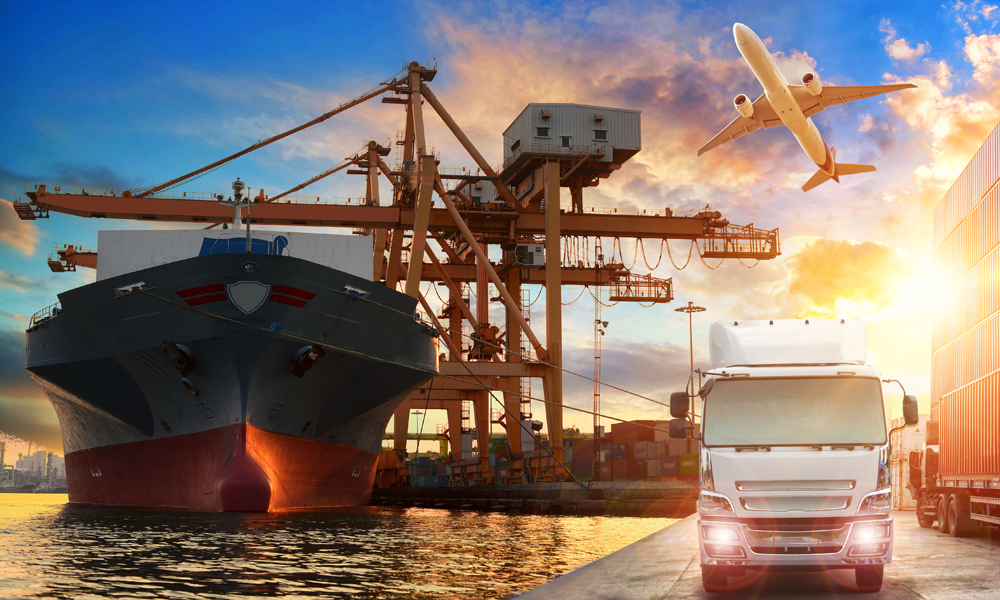
Moving Logistics Forward from the Great Bottleneck of 2021: Part 2
In part 1 of this blog series about logistics, we talked about the state of the industry today. Summed up in one word: Chaos.
We who work with logistics have seen supply chain disruptions before. But nothing like this. Foreign manufacturing partners can’t get the materials they need to do the job. If product is manufactured and loaded onto a cargo ship, there’s every chance that ship will be floating offshore, not allowed to enter a port because of pandemic travel restrictions and complex testing requirements. CNN recently reported that some workers on cargo ships have been onboard for a full year because they can’t get off due to COVID restrictions. If the cargo gets to the port, the containers are stacked up like so many Legos because the trucking industry is experiencing an unprecedented labor shortage — there’s nobody to drive the trucks that haul the cargo to its destination.
The perfect logistics storm. And in its wake, angry consumers, burned-out employees across the logistics spectrum, and frustrated business owners and managers who just want to get their product to market.
What’s being done about it

The White House launched the Supply Chain Disruptions Task Force in June, which focused on bottlenecks that are bedeviling everyone in the logistics industry. As part of that, President Biden named a “Port Envoy” specifically charged with driving coordination between private companies who run the transportation industry and the logistics supply chain.
One recommendation from the task force: Keep California ports open 24/7.
That’s all well and good. But many in the logistics industry say it solves only part of the problem. Brian Bourke, chief growth officer at logistics firm Seko, summed it up nicely in an interview with Bloomberg. He said the 24/7 port schedule mandate is pointless without trucks to pick up the cargo at the port and warehouses being open to receive it. He said touchpoints at all levels of the process need to be in sync to solve the problem. “Everything is connected … that’s why they call it a supply chain.” Good point.
What logistics companies can do

In part 1 of this blog series, we highlighted some actions logistics companies can take right now. It’s about streamlining and perfecting operations, making processes on your end bulletproof, and making sure you’re functioning at the highest capacity. It won’t solve the pandemic problem and it won’t get all of those containers out of ports if truckers aren’t on the job, but you will be doing what you can.
Some of our recommendations included:
Rethink foreign supply chains. Having Asia as a supply partner has long been seen as a way to cut costs. But those cheaper costs come at a price when the supply chain breaks down. Finding more domestic partners is a must.
Make operations more efficient. Look at your own house with a 360-degree perspective to make sure you’re as efficient as possible.
Use SIOP to perfect supply levels. For more information on SIOP and how it can increase your operations efficiency, download our free eBook, Sales, Inventory and Operations Planning: It’s About Time.
Ramp up your hiring. Rethink your pay, benefits, PTO and other perks for the hands you need to get product from point A to B.
For a more detailed look into these recommendations, read “Moving logistics forward from the great bottleneck of 2021: Part 1.”
26th Annual Third-Party Logistics Study

In September, NTT Data released their 2022 26th Annual Third-Party Logistics Study, which highlighted how the industry is managing through the worst crisis in decades. The report has several areas of insight into how logistics companies can move forward, and what logistics peers are thinking.
Here are some highlights from the report:
The intelligent supply chain: The role of technology
The report states “new technology holds the potential to uncover opportunities, increase efficiency and reduce risk within the supply chain, and technology continues to play a critical role in the supply chain. This year’s study respondents reported that promising technologies include 5G, real-time data transmission, Internet of Things and data analytics.”
- 52% of shippers and 63% of 3PLs said 5G technology is either moderately or critically important.
- 63% said they are investing in Internet of Things technology to improve workforce productivity, while 57% said it will improve real-time decision-making and create a competitive differentiator in the market.
- Shippers are focused on increased investment in intelligent data analytics (26%), robotics (20%) and autonomous forklifts (20%).
Cold chain: Planning and moving sensitive loads
According to the report, “the cold chain, which handles everything from ultra-cold vaccine distribution, to fresh food, is critical, and each link must stay connected flawlessly to ensure the quality and safety of temperature-sensitive products. To help meet demands, shipper respondents with cold chains reported a mix of in-house, partially outsourced and fully outsourced services.”
- 89% of shippers reported have a solid cold chain strategy.
- Most shippers, 91%, and 3PLs, 100%, said they expect demand for cold chain capacity to increase over the next three years.
- Both shippers (70%) and 3PLs (52%) said COVID-19 has accelerated their growth plans, increasing their need for more cold chain capacity.
- 70% of shippers said they expect to grow inhouse cold chain capabilities and talent over the next three years.
- 50% said they plan to outsource more of their cold chain capabilities. About 90% of 3PLs said they plan to expand their cold chain capabilities and service offering.
The effects of COVID-19
The study states, “COVID-19 drew national and global attention to the supply chain and highlighted the need for contingency planning and risk mitigation strategies. Researchers took a deeper look at the effect the pandemic had on shippers and their logistics providers as well as how their experiences have shaped their future plans.”
- 96% of 3PLs and 100% of shippers said they are enhancing their readiness and continuity planning. The top five areas 3PLs are currently working to improve based on current approved projects and budgets are data analysis and visibility (50%), labor management and scheduling (48%), domestic transportation and logistics (38%), and warehouse distribution and operations (38%).
- Shippers reported currently working to improve demand forecasting (42%), capacity forecasting (40%), international transportation and logistics (38%), supply chain network design or redesign (36%), and data analysis and visibility (33%).
Rebalancing supply chains
According to the study: “For years supply chains focused on reducing inventory levels and cutting costs, but the past year has drawn attention to the risk of becoming too lean. A move to just-in-time inventory has impacted the resilience and agility of supply chains to respond to significant disturbances, and this year’s Annual Third-Party Logistics Study looked at shippers’ plans to rebalance supply chains.”
- 68% of shippers believe that supply chains have become too global and must be rebalanced toward more regional and local/domestic ecosystems within larger global enterprises.
- 83% of shippers said they plan to adjust sources of supply as a direct result of efforts to rebalance toward regional and local/domestic sources.
- For shippers, several factors are contributing toward global rebalancing, including increased need for supply chain resilience (71%), increased awareness of supply chain vulnerabilities (63%) and more restrictive trade policies (41%).
For a deeper dive into these areas, download the entire report here.
At USC Consulting Group, we’ve been helping companies find efficiencies in the midst of challenging times for more than 50 years. Contact us today to learn more.






